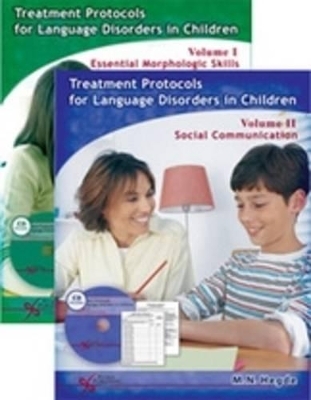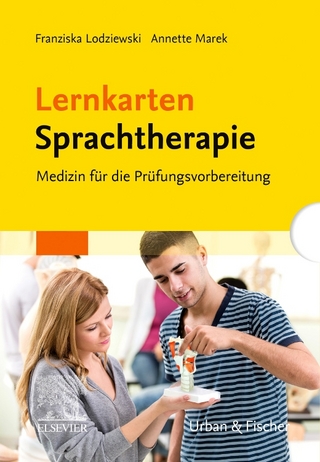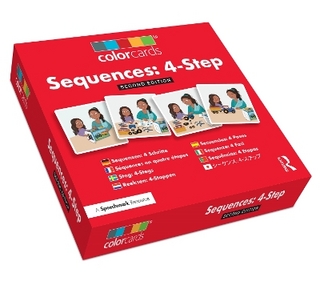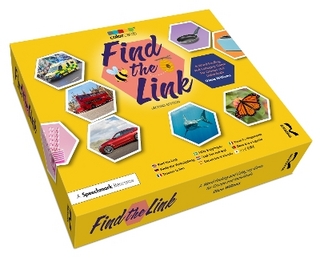
Treatment Protocols for Language Disorders in Children
Plural Publishing Inc
978-1-59756-045-0 (ISBN)
- Titel ist leider vergriffen;
keine Neuauflage - Artikel merken
A unique guide to treatment of language disorders in children - with step-by-step, scripted scenarios that the clinician can follow Saves clinician's time in that much of the preparatory work in treating disorders is laid out in front of them Giri Hegde has an excellent track record in publishing successful books for the SLP audience Detailed treatment protocols are common in medicine, but unusual in speech-language pathology. Protocols of treatment are more than a description of treatment procedures. They are comprehensive and detailed enough that a clinician can simply follow the protocols to complete baserates, treatment, and probe. These two protocols are unique in that they are written, not as treatment descriptions, but as scripts the clinician and the child follow. In fact, the scripted treatment protocols describe the roles the clinician and the client play in treatment sessions. Protocols specify all target language skills, up to 20 exemplars for each target skill, and scripted treatment, baserate, and probe protocols.
In addition, the clinician also will find all that is necessary to document the child's entry level skills, progress during treatment, and generalized productions of target skills in untrained linguistic contexts. To accomplish this important task, the protocols include baserate, treatment, and probe recording sheets. The protocols are a resource that is unmatched by any on the market. By using the protocols, the clinician can save much treatment planning time and effort. Unlike any resource manual that exists, the protocols have all the language treatment targets and their exemplars already printed on forms the clinician can use in treatment sessions. All recording sheets may be either photocopied or printed from the included compact disc (CD). The clinician can personalize the recording forms by simply typing-in the names of the clinic, the child, and the clinician, along with other personal information that is typically included in a recording sheet. The targets are roughly sequenced to facilitate teaching more basic to more advanced language skills to children with language disorders.
Clinicians, however, are free to sequence teaching as they see fit; they can enter a child into treatment at any point in the protocols and have the child exit at any later point. Treatment Protocols for Language Disorders in Children - Volume I: Essential Morphologic Skills The first book contains protocols for basic language skills most children with language disorder need to be taught in the initial stages of treatment. The protocols give scripted scenarios for teaching most of the bound morphemes of English that children with language disorder typically lack. These include: basic words; regular and irregular plurals; possessive; present progressive; prepositions; pronouns; auxiliaries and copula; regular and irregular past tense; articles; conjunctions; adverbs; regular third person singular. For each target skill, 20 exemplars are available for the clinician to baserate, treat, and probe for generalized production. Most children can be advanced to relatively complex social communication skill level training only when they have mastered the basic morphologic features.
Because the clinicians roughly sequence in this manner, the basic morphologic skills and more advanced social communication skills are described in two separate volumes. Treatment Protocols for Language Disorders in Children - Volume II: Social Communication The second book contains protocols for teaching social communication skills to children who have mastered the basic morphologic skills.
These relatively advanced social communication skills include the following: adjectives; comparatives and superlatives; adverbs; production of various kinds of requests; production of commands; comprehension of commands; production and comprehension of a variety of questions including what, why, when, where, who, how, which, yes, and no; production of negative sentences (negation) including is not/are not, I am not/I do not, I was not/I did not, constructions; passive sentences without and with the agent; topic - initiation; topic - maintenance; turn taking; eye contact; conversational repair: requests for clarification; conversational repair: responding to requests for clarification As in the first volume, the protocols to teach social communication includes scripted scenarios that the clinician and the child can follow. Just by enacting the roles assigned to the clinician and the child, effective treatment may be accomplished. All target skill exemplars, detailed scripts, and recording sheets are provided on both the printed text and the CD.
M. Hegde, Ph.D. M. N. Hegde, Ph.D. is Professor of Speech-Language Pathology in the Department of Communicative Disorders at California State University, Fresno. A highly regarded author in speech-language pathology, his books include leading texts in academic courses and valuable resources for clinicians. His books have been used in worldwide in speech-language pathology programs.
Treatment Protocols for Language Disorders in Children - Volume I: Essential Morphologic Skills Preface Introduction to Treatment Protocols and the CD Resource Part I. Functional Words, Phrases, and Sentences Protocols for Teaching Functional Words and Phrases Overview General Training Strategy Functional Words Functional Phrases Functional Sentences (Production) Part II. Morphologic Features Protocols for Teaching Morphologic Features Overview General Training Strategy Regular and Irregular Plural Morphemes Overview General Training Strategy Regular Plural s Regular Plural z Regular Plural ez Irregular Plural Words The Possessive Morphemes Possessive s Possessive z Possessive ez Irregular Third Person has with Pronoun she Irregular Third Person has with Pronoun he Irregular Third Person has with Pronoun it Irregular Third Person have with Pronoun they Prepositions Preposition in Preposition on Preposition under Preposition behind Present Progressive ing Auxiliaries and Copulas Auxiliary is Auxiliary was The Copula Copula is Copula was Past Tenses Irregular Past Regular Past d Regular Past t Regular Past ed Pronouns Pronoun he Pronoun she Pronoun it Articles Article a Article the Conjunctions Conjunction and Conjunction because Conjunction but Glossary References Appendices Index Treatment Protocols for Language Disorders in Children - Volume II: Social Communication Preface Introduction to Treatment Protocols and the CD Resource Adjectives Comparatives and Superlatives Adverbs Adverb "ly" Mands (Requests and Commands) Mands I: Give Me Requests Mands II: I need Requests Mands III: I want Rrequests Mands IV: May I have Rrequests Mands V: Help me/Tell me Rrequests Mands VI: Commands (Comprehension) Mands VII: Direct Commands (Production) Mands VIII: Questions What questions Why questions When questions Where questions Who questions How questions Which questions Yes questions No questions Negative Sentence Forms (Negation) Negation: Is not/Are not Constructions Negation: I am not/I do not Constructions Negation: I was not/I did not Constructions Passive Sentences Passive Sentences: Level I Training (without the Agent) Passive Sentences: Level II Training (with the Agent) Conversational Skills Topic Initiation Topic Maintenance Turn Taking Eye Contact During Conversation Conversational Repair Child's Request for Clarification Child's Response to Requests for Clarification Expression of Emotions, Feelings, Thoughts, and Opinions Expression of Emotions and Feelings Expression of Thoughts and Opinions English Idioms Production of Idioms Glossary References Appendix A: Baseline Recording Sheet Appendix B: Treatment Recording Sheet Appendix C: Probe Recording Sheet Index
| Erscheint lt. Verlag | 16.12.2005 |
|---|---|
| Zusatzinfo | b/w illustrations |
| Verlagsort | San Diego |
| Sprache | englisch |
| Maße | 216 x 279 mm |
| Themenwelt | Medizin / Pharmazie ► Gesundheitsfachberufe ► Logopädie |
| Medizin / Pharmazie ► Medizinische Fachgebiete ► Pädiatrie | |
| ISBN-10 | 1-59756-045-6 / 1597560456 |
| ISBN-13 | 978-1-59756-045-0 / 9781597560450 |
| Zustand | Neuware |
| Informationen gemäß Produktsicherheitsverordnung (GPSR) | |
| Haben Sie eine Frage zum Produkt? |
aus dem Bereich


